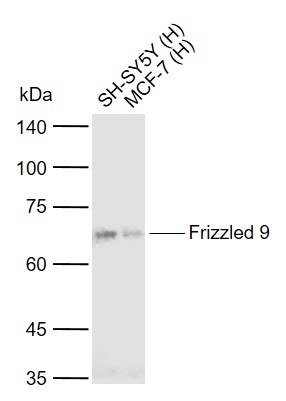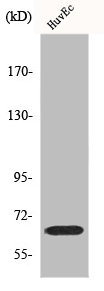
Lane 1: Human SH-SY5Y cell lysates; Lane 2: Human MCF-7 cell lysates probed with Frizzled 9 Polyclonal Antibody, Unconjugated (bs-11842R) at 1:1000 dilution and 4°C overnight incubation. Followed by conjugated secondary antibody incubation at 1:20000 for 60 min at 37˚C.
Frizzled 9 Polyclonal Antibody
BS-11842R
ApplicationsImmunoFluorescence, Western Blot, ELISA, ImmunoCytoChemistry
Product group Antibodies
TargetFZD9
Overview
- SupplierBioss
- Product NameFrizzled 9 Polyclonal Antibody
- Delivery Days Customer16
- ApplicationsImmunoFluorescence, Western Blot, ELISA, ImmunoCytoChemistry
- Applications SupplierWB(1:300-5000), ELISA(1:500-1000), IF(ICC)(1:50-200)
- CertificationResearch Use Only
- ClonalityPolyclonal
- Concentration1 ug/ul
- ConjugateUnconjugated
- Gene ID8326
- Target nameFZD9
- Target descriptionfrizzled class receptor 9
- Target synonymsCD349, FZD3, frizzled-9, frizzled 9, seven transmembrane spanning receptor, frizzled family receptor 9, frizzled homolog 9, fz-9, fzE6, hFz9
- HostRabbit
- IsotypeIgG
- Protein IDO00144
- Protein NameFrizzled-9
- Storage Instruction-20°C
- UNSPSC12352203
References
- Vasyliev RG, Rodnichenko AE, Gubar OS, et al. Large-scale expansion and characterization of human adult neural crest-derived multipotent stem cells from hair follicle for regenerative medicine applications. Exp Oncol. 2017,39(3):171-180.Read this paper



